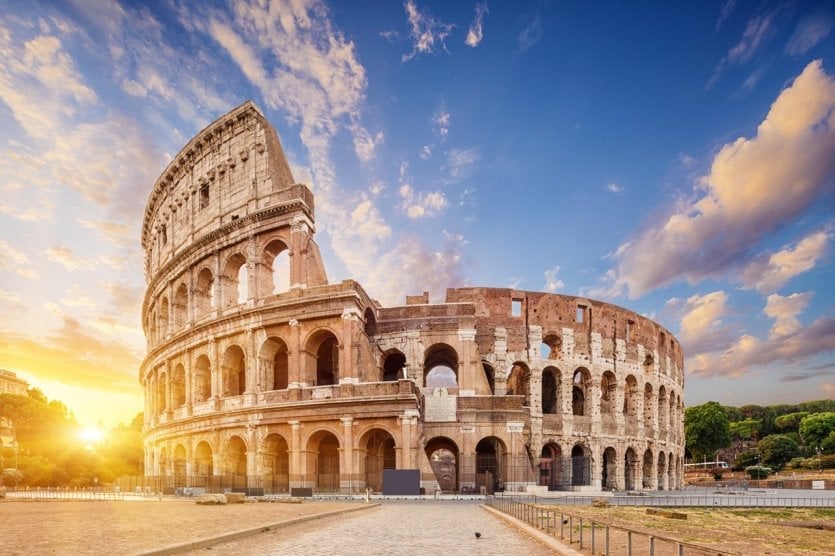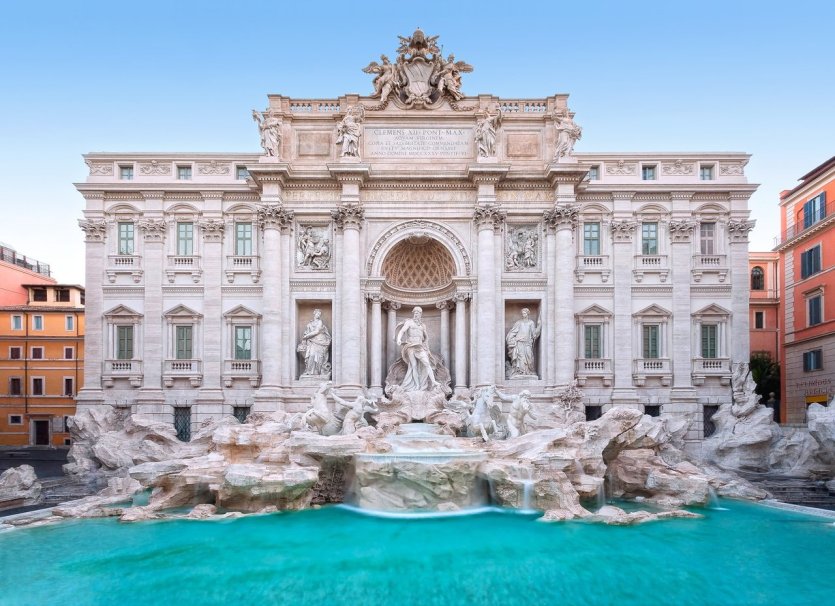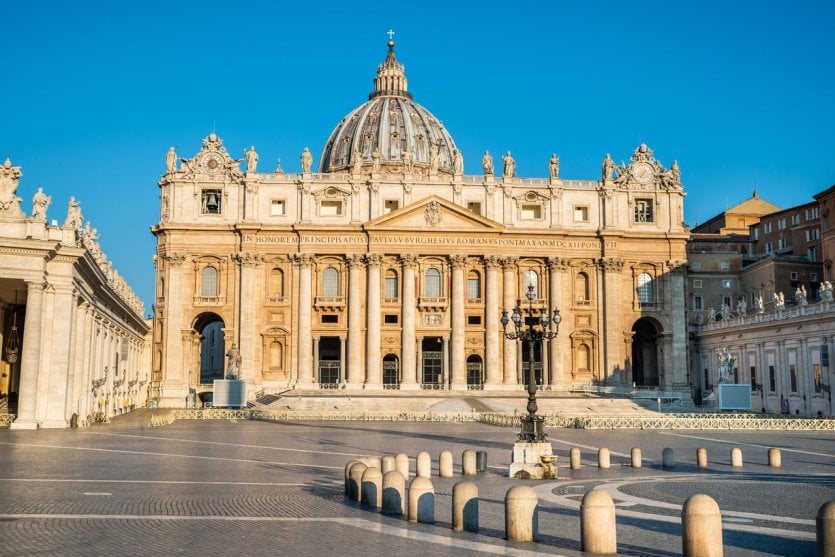
Rome is one of the world's top 10 capital cities to visit at least once in your lifetime. To visit it in its entirety (or almost), you'll need at least 3 days. A road trip or a long weekend is the best way to discover this historic city, with its many treasures - not least of which are not hidden - spread across the four corners of what is known as the "eternal city". From the Colosseum to the Vatican, via the Trevi Fountain, follow our step-by-step guide to discover Italy's most emblematic city!
Day 1: Ancient Rome with the Colosseum, Roman Forum and Capitoline Museums

Let's start here, because we know you'll be dying to discover the Colosseum and the city's other ancient wonders! After all, if Rome is one of Italy's 10 must-visit cities, it's partly thanks to this major Roman monument.
Your first morning in Rome..
Feeling fit? Perfect, because there's plenty to see during your stay!
-The Colosseum
Built in 72 AD, the Colosseum is undoubtedly the landmark of Rome, not to say the whole of Italy. At 188 metres long, it once held no fewer than 75,000 people! Although it has undergone many ups and downs over the centuries, it still stands majestically in Rome, thanks to the initiative of Pope Clement XI. The Colosseum is also an ideal place to visit if you're travelling with children, who love to imagine themselves in the shoes of gladiators and other characters who today only exist in books. It will be a unique adventure for them, all the more so if you make this trip when gladiatorial shows take place in the arenas!
Please note in season and at weekends, the queue to visit this monument can be very long! But you only have 3 days to see as much as possible. To save time, we recommend that you buy an all-inclusive pass for this monument, the Forum and Mount Palatine. If you don't feel you really need an all-inclusive pass, you can still opt for the Rome Tourist Card to pay less for your visits. And don't forget to check out our top tips for organizing your visit to the Colosseum: you'll save time!
Your first afternoon in Rome..
It's time to eat a nice Italian meal in a trattoria, before starting your afternoon visits. While you digest, enjoy the Roman dolce vita by strolling through its historic streets and visiting the remains of the past. Among these, the Roman Forum is a must-see.
-The Roman Forum
The Colosseum and the Roman Forum are only 600 meters apart. So it's only logical that this should be stop #2on your tour.
Although part of the Forum is now in ruins (after 2,000 years, it's understandable), many vestiges of Rome's ancient social hub remain. It was here that active life took place. Romans gathered here to discuss important matters, to meet, to trade and so on. The many remaining elements make it easy to immerse yourself in this bustling ancient Rome. Pure wonder!
Depending on your pace, you should allow 1 to 2 hours to visit the Roman Forum. Some tours, guided or not, also include Mount Palatine, which offers a breathtaking view of the Forum.
- Capitoline Museums
There's still plenty of time to visit the Capitoline Museums in Piazza del Campidoglio. A visit to these museums immerses you in the history of Rome, including the possessions of successive popes. The museums are housed in the Palazzo dei Conservatori and the Palazzo Nuevo. Their construction dates back to 1471, and they have been constantly improved over the centuries. Here you can admire superb sculptures, among other works of art. The Palazzo dei Conservatori, for example, is home to the sculpture of the she-wolf suckling Romulus and Remus. We advise you to book your ticket here .
Day 2: Rome's historic center withthe Trevi Fountain,Piazza Navona,Piazza di Spagna,Via del Corso and Piazza del Popolo

Now you've satisfied your irrepressible urge to discover Rome's most emblematic monument. Now it's time to stroll around the city! Well, stroll, but not too much stroll, as there are many wonders waiting for you.
Your second morning in Rome..
After a hearty Italian-style breakfast, it's time to visit the heart of Rome!
- Trevi Fountain
Don't wait until the last minute to see the Trevi Fountain, which is emptied every Monday to collect the coins people throw in. Ideally, don't dawdle too long before breakfast, so you can admire it between 8 and 10 am. Beyond that, the sheer number of tourists present will prevent you from getting a good look at it, as well as taking nice photos. It's a quick visit, but one that's not to be missed, with its superb Neptune enthroned at its center!
Would you like to take your time and contemplate this architectural marvel? Enjoy one of Rome's best rooftops, at La Terrazza del Cesàri.
- The Pantheon
There's still plenty of time to visit the Pantheon, just ten minutes from the Trevi Fountain! This informative visit lasts a maximum of half an hour. On a self-guided or guided tour, you can discover one of the pillars of Roman history. You won't want to miss its sublime dome, marble floors and superb period doors. We advise you to book youraudio-guided ticket here, so you don't have to queue at the entrance.
Visiting Rome in winter? The Pantheon is a must-see during the Christmas season. As soon as night falls, you'll be able to see its facades decked out in Christmas lights, offering a spectacle like no other.
- Piazza Navona
850 meters from the Pantheon is the Piazza Navona, your next port of call. This is one of Rome's most beautiful squares, and also one of the most visited. It features 3 fountains, including the famous Fountain of the Four Rivers and its obelisk. You can also visit the church of Santa Agnese in Agone, and finish your tour of the square at a café terrace.
- Piazza di Spagna
Just over a kilometer further on, admire the Piazza di Spagna, whose most famous feature is the Trinità dei Monti staircase, leading to the church of the same name. You can also visit the church, free of charge! The other highlight of this lively square is the Barcaccia fountain, as beautiful up close as it is from the top of the stairs.
Now it's time to relax and enjoy a pizza or pasta bolognese, before tackling the afternoon's sightseeing!
Your second afternoon in Rome..
Catch your breath, because you're not done yet! I promise, the next visits will also be worth your while.
- The Villa Borghese
To visit this famous villa, you need to make a reservation: gohere to book your guidedtour of the Borghese Gallery! We also advise you to read all the essential information on the Villa Borghese before you visit. You've only got 3 days, so it would be a shame to waste any time! In fact, some passes covering several monuments allow you to visit this Roman must-see. You book a 2-hour slot, during which you can admire the superb Villa Borghese Museum. The gardens are also worth a visit, with their hydraulic clock, the Casina di Raffaello and their superb water features.
- Via del Corso and Piazza del Popolo
You can already admire the Piazza del Popolo from the heights of the Villa Borghese gardens. Afterwards, you can continue your afternoon down the street. Magnificent ancient buildings await you, including the Basilica Santa Maria del Popolo.
After admiring this superb Piazza del Popolo, head for Via del Corso, one of the most popular pedestrian streets for shopping enthusiasts!
Day 3: The Vatican and other must-sees in Rome, includingthe Vatican Museums and the Sistine Chapel,St. Peter's Basilica,Castel Sant'Angelo and theTrastevere district

Whether you're a believer or not, admiring the Vatican is a pleasure you can't miss when visiting Rome. In addition, there are many other monuments and neighborhoods to visit that would be a shame not to see before you leave.
Your third morning in Rome..
Ah! the end of these 3 days is fast approaching, but don't despair: there are still many wonders to discover! And if you're lucky enough to stay longer, we suggest you read our article "What to do and see in Rome? 21 must-sees".
- The Vatican Museums and the Sistine Chapel
Some people think it's impossible to visit the Vatican. But some of it is open to the public. So how do you visit the Vatican and the famous Sistine Chapel?
Allow between two and three hours for a guided tour of the Vatican Museums, which you can book here. This includes the Sistine Chapel and St. Peter's Basilica. There are no fewer than 13 museums in this city-state... You may not be able to visit them all, but a small selection will allow you to admire hundreds of superb works. We advise you to book your tickets online well in advance, to avoid long queues. It's better to save your precious time for the last must-see visits before you leave.
Please note: The Vatican Museums are closed on Sundays!
- St. Peter's Basilica
St. Peter's Basilica is, unsurprisingly, one of the 21 must-sees in Rome on a short or long stay. Again without surprise, it's in St. Peter's Square that you'll find the basilica of the same name.
Its construction, begun in 324, was not without its ups and downs. However, architects and a certain Michelangelo (we're sure you've heard of him!) took over the reins of construction. You won't want to miss its famous dome ! Although the visit is free, it's advisable to opt for a guided tour to avoid a two-hour queue..
Then it's time to sit down on the terrace of a good restaurant, such as Angelo's, and enjoy some of the best Italian specialities you'll find anywhere!
Your last afternoon in Rome..
Now you're ready to tackle the home stretch of these marvelous discoveries!
- Castel Sant'Angelo
Less than 3 km from the Vatican, you'll find Castel Sant'Angelo, another ancient architectural treasure. Originally conceived as a mausoleum, it later became a fortress, serving as a hiding place for Christian treasures. For a time, it was even used as a prison! With its rich religious history, it's a superb building to visit without restraint!
Pleasenote: Château Sainte-Ange is closed on Mondays. You can book your ticket for an audio-guided tour of Castel Sant'Angeloright here .
- The Trastevere district
Finally, it's impossible to visit Rome without spending at least a little time in its charming Trastevere district! With its cobbled streets nestled between flower-filled period buildings, it's simply sublime. This is Rome's most convivial district. Its boutiques, bars and alleyways are the perfect way to end your short trip to Rome. Take the time to enjoy the Italian Dolce Vita as you stroll through its charming, picturesque alleys..
From the Piazza di Santa Maria in Trastevere to the Basilica of Santa Maria del Trastevere, the atmosphere is resolutely relaxed. If time permits, we recommend a climb to the top of the Gianicolo hill. The view of the city from up there is simply sublime!
Still have a little time before departure? Treat yourself to a visit to the Giardino degli Aranci. It's one of the most magical places in which to make your marriage proposal!
Rome is one of the 27 most beautiful places to visit in Italy. You may have had a bit of a marathon, but you'll leave with the most beautiful memories of this emblematic city of our beloved Italy. It's best to visit Rome in mid-season, around May, to avoid the heat. Likewise, visiting Rome in October, after the summer rush, has many advantages. Something tells us you'll probably want to come back for a week's vacation..
When is the best time to visit Rome?
The climate in Rome is generally pleasant, with mild winters and mild weather. However, summer can be very hot, especially in August, when many Roman residents leave in search of cooler temperatures, leaving the city rather deserted. This period can make visiting the city less enjoyable and give the impression of a dead city. As spring can be quite rainy, the best time to visit Rome is autumn, especially during the Roman ottobrate in October, when the climate is similar to that of an Indian summer.
Getting around Rome
Renting a car in the center of Rome is both unnecessary and expensive. Even the most remote tourist attractions are easily reached by bus or metro. Rome's metro has 3 lines (A, B, C) and operates daily from 5.30am to 11.30pm. It closes at 00:30 on Fridays and Saturdays. As far as public transport fares in Rome are concerned, tickets are accepted for all means of transport in the city, such as buses, streetcars and the metro. Costs range from €1.50 for a one-way ticket to €6 for a day ticket (€16.50 for 3 days) or €24 for a weekly pass. To avoid multiple transport costs, or long hours of walking, you can also choose to book an electric bike right here, taking advantage of our partner's offers.
Where to stay in Rome? Our selection of the best hotels
Rome is a popular tourist city, offering an abundance of accommodation to suit all tastes and budgets. Most of Rome's hotels are located in central tourist areas such as the historic center, the Vatican and Trastevere. It's advisable to book in advance, especially during peak periods, to guarantee the best deals and optimum availability. Here are our top 3 best hotels in Rome!
- The cheapest
The Hotel Garda enjoys a peaceful location just a few minutes from all Rome's attractions and a short walk from the famous Via Veneto. Piazza di Spagna and the Trevi Fountain are a 5-minute walk away, and rates are reasonable. Click here to to book your hotel stay!
- The best value for money
Hotel Dei Borgognoni is a great address for a charming stay in one of Rome's most sought-after districts. It's close to the Trevi Fountain and the historic center. Everything is within walking distance, and it's quiet and well secluded. For rates and availability, click here!
- For history buffs
Built in the 17th century, Hotel Voi Donna Camilla Savelli is one of Rome's most historic hotels. A former convent , it was renovated by the architect Borromini himself. A big plus for the beamed ceilings. For rates and availability, click here!
Click here to discover the rest of our favorite accommodations!


